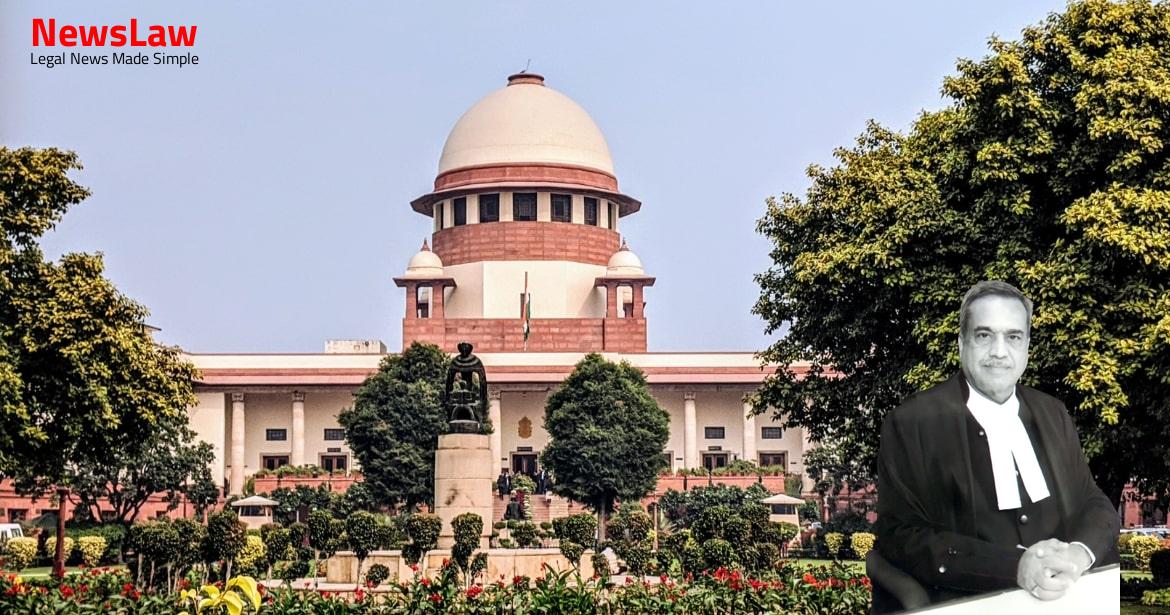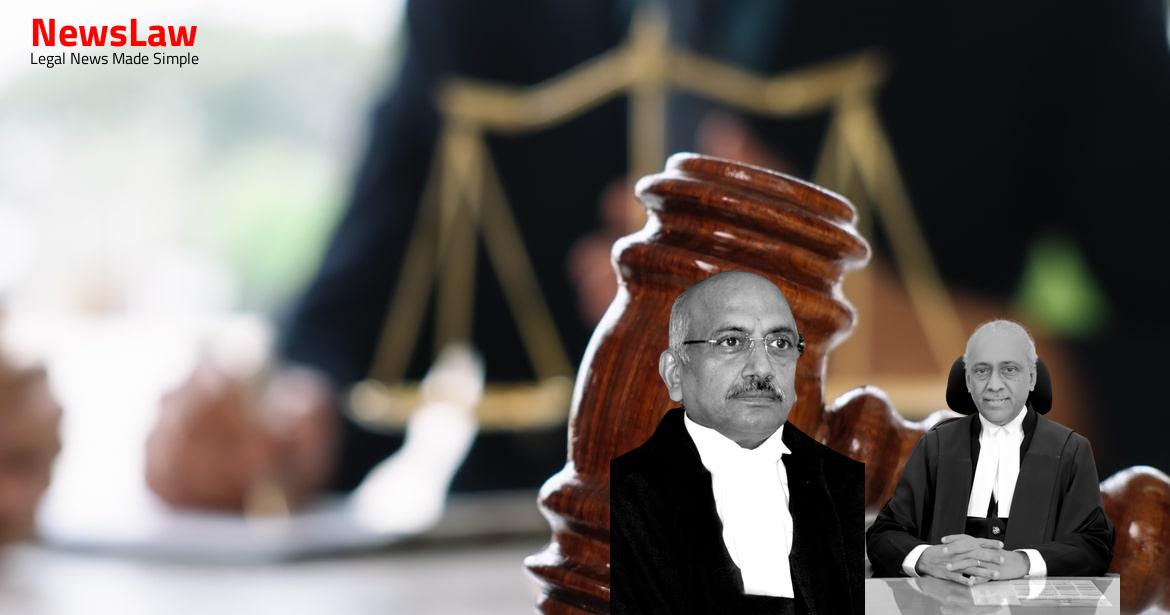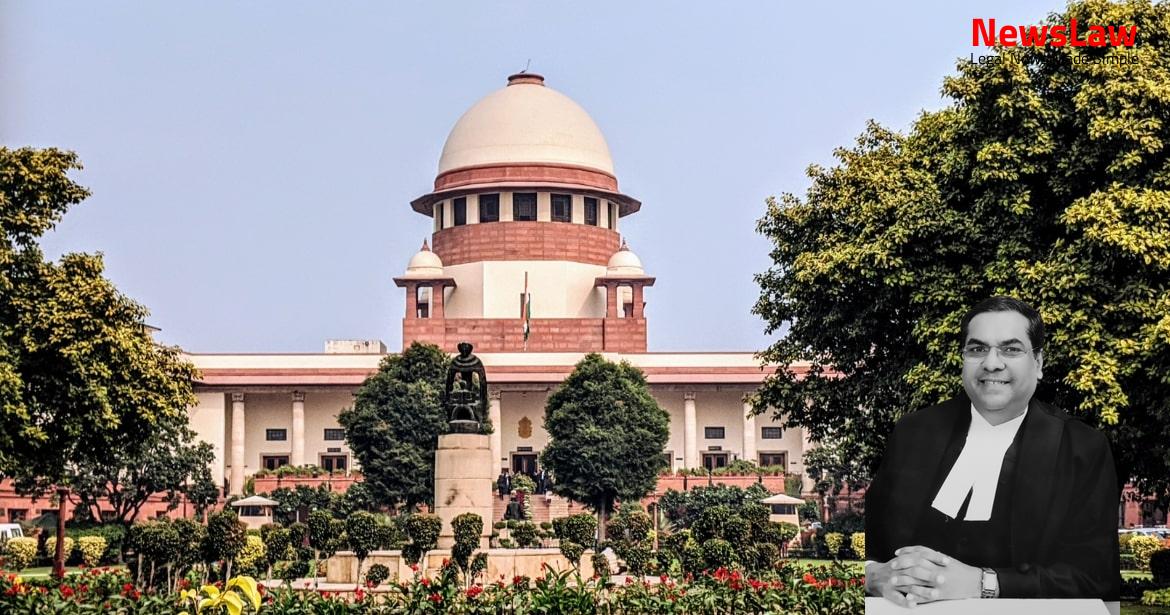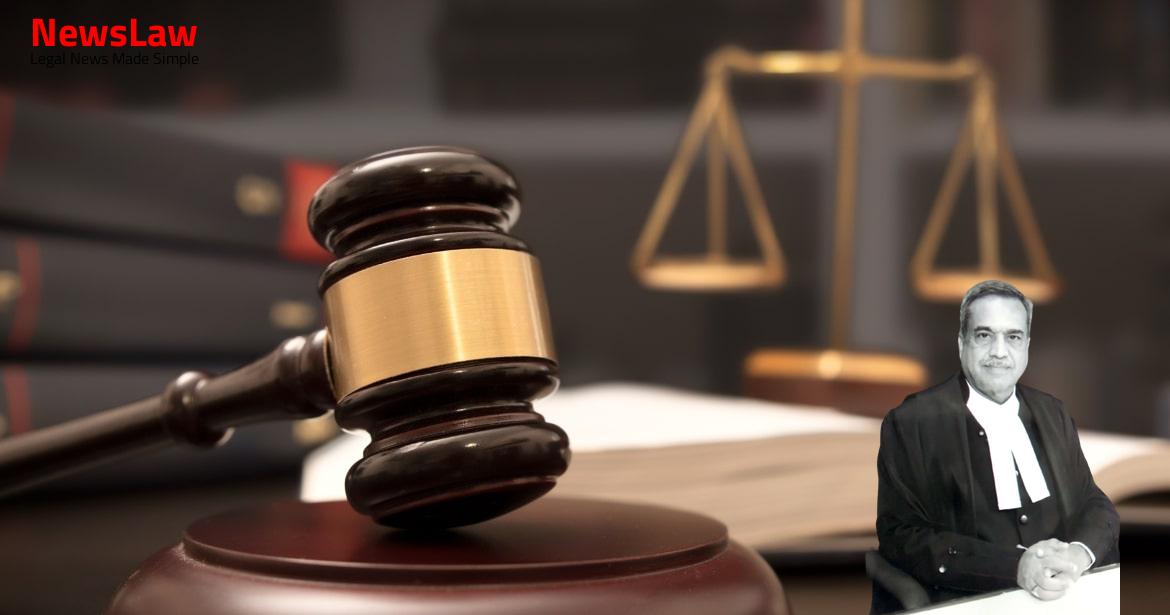Explore the critical legal analysis by the court regarding the interpretation of Rule 12(4) in cases of illegal occupation of panchayat land. The discussion focuses on the conditions and limitations set forth in the rule, shedding light on the complexities surrounding regularization of encroachments. Dive into the nuances of the court’s interpretation and the implications it holds for similar cases.
Facts
- Petitioners encroached upon panchayat land and constructed houses in Village Sarsad, Tehsil Gohana, District Sonepat.
- Lands on which houses were constructed belong to Gram Panchayat.
- High Court referenced the decision in Jagpal Singh v. State of Punjab (2011) 11 SCC 396, directing State Governments to prepare schemes for eviction of illegal occupants of Gram Panchayat land.
- Competent authority and High Court misinterpreted Rule 12(4) of the 1964 Rules according to the petitioners.
- In 2000, Haryana Government framed a policy regarding the sale of panchayat land in unauthorized possession inside or outside the Abadi Deh.
- In 2008, Rule 12(4) was incorporated in the 1964 Rules allowing Gram Panchayats to sell non-cultivable land in Shamlat Deh to villagers who constructed houses before 31.03.2000, subject to conditions.
- Rule 12(4) stipulates that construction on panchayat land must be before 31.03.2000, on non-cultivable land, not obstructive to traffic, and limited to a maximum of 200 square yards for regularization/sale.
- Petitioners applied under Rule 12(4) to sell illegally occupied land with panchayat resolution, but the Deputy Commissioner rejected it due to the area exceeding 200 square yards.
- The Government of Haryana amended the Punjab Village Common Lands (Regulation) Rules, 1964, through a notification dated 1.8.2001.
Also Read: Electoral Malpractices in Mayor Election
Arguments
- The cases of the petitioners fall within Rule 12(4) of the 1964 Rules.
- The bar under Rule 12(4) of the 1964 Rules applies only when the constructed area is more than 200 square yards.
- Even if the total area of the unauthorised occupation is more than 200 square yards, it is required to be regularized under Rule 12(4).
- No specific finding was made by the competent authority regarding the area over which the petitioners’ houses were constructed and the open space area.
- Rule 12(4) does not limit the area of the constructed houses but creates a limit of 25% open space of the constructed area up to a maximum of 200 square yards.
- The case of Jagpal Singh did not consider Rule 12(4) of the 1964 Rules.
Also Read: Balancing Power and Transparency: Electoral Bonds Struck Down, Disclosure Mandated
Analysis
- Persons in illegal occupation of Government Land/Panchayat Land cannot claim regularization as a matter of right.
- Illegal occupation of panchayat land can only be regularized if the area is up to a maximum of 200 square yards.
- If the illegal occupation exceeds 200 square yards, the regularization under Rule 12(4) of the 1964 Rules is not applicable.
- The cap of 200 square yards aims to regularize small land encroachments.
- The competent authority found the petitioners to be in illegal occupation of areas exceeding 200 square yards, hence not entitled to regularization under Rule 12(4).
- The policy stipulates that only illegal occupation up to 200 square yards can be sold on regularization.
- The Court criticized trespassers who encroached upon Gram Sabha/Gram Panchayat Land with illegal means.
- Illegal occupation includes the constructed area, open space, and appurtenant area.
- The argument that the 200 square yards cap applies only to constructed area and not open space or appurtenant area was rejected.
- Regularization of illegal occupation of Government Land/Panchayat Land can only be as per the policy of the State Government and the conditions stipulated in the Rules.
- Conditions stipulated for regularization must be fulfilled for the entitlement to regularization.
- Compliance with the terms of the policy is necessary for seeking benefits.
- In case of non-compliance, illegal occupants are not entitled to regularization.
- If there is construction on the land, it must be removed and possession returned to the Gram Panchayat.
- Regularizing illegalities on Gram Sabha land must not be permitted to ensure common use for villagers.
- All State Governments should prepare schemes for eviction of illegal occupants of Gram Sabha/Gram Panchayat/Poramboke/Shamlat land.
- Restoration of the land to Gram Sabha/Gram Panchayat must be ensured.
- Blatant illegalities must not be condoned, as observed by the Court.
Also Read: Recall of Resolution Plan Approval: Legal Analysis
Decision
- The prayer for regularization of illegal occupation of panchayat land cannot be accepted.
- Explanation of reasons provided in the above content.
- The petitioners’ request for regularization cannot be granted.
Case Title: JOGINDER Vs. THE STATE OF HARYANA (2021 INSC 62)
Case Number: SLP(C) No.-001829 / 2021



